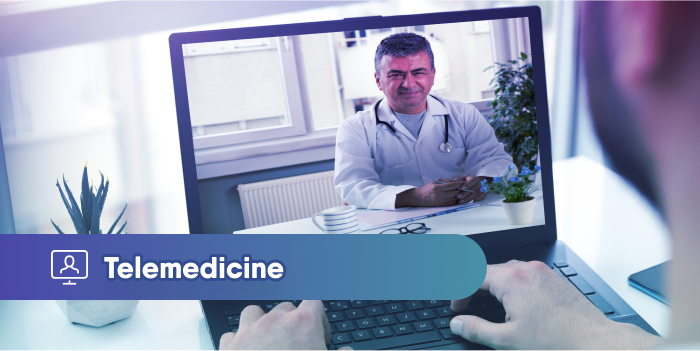Essential Telemedicine Reviews: Finding the Right Service for Your Requirements
Essential Telemedicine Reviews: Finding the Right Service for Your Requirements
Blog Article
Welcoming Telemedicine: Transforming Medical Care Distribution for a Modern World
As we browse an era defined by quick digitalization and developing individual needs, the combination of telemedicine right into traditional health care techniques presents a compelling suggestion. In exploring the implications and ins and outs of welcoming telemedicine, a nuanced understanding of its multifaceted effect on medical care distribution in the modern world ends up being imperative.
The Development of Telemedicine
Telemedicine has gone through considerable advancement over the previous couple of years, changing the landscape of medical care distribution. Conceived to bridge the void in between medical care carriers and individuals in remote locations, telemedicine has actually currently expanded its reach to use a large variety of clinical solutions through technical improvements.
In the onset, telemedicine mainly included appointments using telephone or video conferencing. Nevertheless, with the spreading of electronic tools and platforms, health care specialists can currently from another location check crucial indications, conduct virtual exams, and also carry out particular clinical procedures. This change towards even more extensive virtual care has actually reinvented the way health care is provided, making it extra hassle-free and available for clients.
Moreover, the combination of digital health documents (EHRs) and telemedicine has boosted sychronisation amongst healthcare teams, resulting in extra reliable and collective individual treatment. Telemedicine reviews. With the ongoing improvements in expert system and remote tracking tools, telemedicine is poised to continue progressing, using cutting-edge options to enhance medical care outcomes globally

Advantages of Telemedicine Adoption
As the application of telemedicine has expanded to incorporate a wider range of medical solutions and technological capacities, the benefits of its adoption in modern-day health care delivery have come to be increasingly obvious. One of the main benefits of telemedicine is enhanced accessibility to healthcare services, specifically for individuals in underserved or remote locations. Clients can currently talk to healthcare carriers without the need for extensive travel, minimizing both time and price barriers. Additionally, telemedicine improves ease for people by allowing them to arrange visits sometimes that match their schedules, advertising better adherence to treatment strategies.
Additionally, telemedicine can result in improved health outcomes through enhanced treatment control. With the capacity to conveniently work together and share medical records with specialists, healthcare companies can use more extensive and timely therapy. This structured method can result in faster diagnoses, minimized health center admissions, and far better administration of chronic conditions. In addition, telemedicine can assist minimize strain on traditional medical care systems by minimizing overcrowding in hospitals and facilities, ultimately improving total efficiency and person fulfillment.
Overcoming Telemedicine Challenges
Resolving the barriers intrinsic in incorporating telemedicine into existing healthcare systems presents a critical yet surmountable difficulty for healthcare companies worldwide. Convincing traditional medical care carriers to adopt telemedicine requires comprehensive training programs and continual assistance to guarantee smooth assimilation.
Furthermore, regulative barriers and compensation limitations posture considerable challenges to the prevalent implementation of telemedicine. Numerous state and country laws relating to telemedicine practices develop a complicated atmosphere for service providers to browse. Compensation plans that do not sufficiently compensate for telemedicine services can deter medical care organizations from purchasing this innovative technique to care delivery.

Enhancing Patient-Provider Interaction
Navigating the landscape of telemedicine difficulties illuminates the important requirement for boosting patient-provider communication in modern-day healthcare distribution systems - Telemedicine reviews. Effective interaction exists at the heart of top quality health care stipulation, and in the realm of telemedicine, where physical hints might be restricted, empathetic and clear communication comes to be even a lot more paramount
Enhancing patient-provider communication in telemedicine involves various strategies. Supplying clear directions, setting reasonable expectations, and go ensuring open lines of interaction for follow-up inquiries can enhance the total individual experience in telemedicine.
Future Trends in Telemedicine
Expecting the development of telemedicine, innovations in modern technology and health care delivery systems are leading the way for ingenious methods to patient treatment. One of the future trends in telemedicine is the assimilation of expert system (AI) and machine understanding formulas to enhance analysis abilities. AI can evaluate substantial quantities of patient information rapidly, read here aiding medical care companies in making much more exact diagnoses and therapy decisions. In addition, using virtual truth (VR) and increased reality (AR) in telemedicine is getting momentum. These modern technologies can create immersive experiences for both providers and individuals, facilitating online consultations and medical training simulations.
By leveraging telemedicine, healthcare service providers can reach people in remote locations, improving access to quality care. These advancements in telemedicine hold terrific pledge for changing medical care shipment and improving patient outcomes in the future.
Verdict
To conclude, telemedicine has changed medical care distribution by improving access check my reference to care, enhancing performance, and boosting person outcomes. Regardless of obstacles, the advantages of telemedicine adoption are clear, leading the way for far better patient-provider communication and future developments in healthcare. As modern technology remains to develop, telemedicine will play a crucial duty in transforming medical care shipment for a modern globe.

Expecting the evolution of telemedicine, advancements in modern technology and health care delivery systems are leading the method for ingenious approaches to person treatment. These advancements in telemedicine hold great pledge for transforming healthcare shipment and improving person results in the future.
In conclusion, telemedicine has actually transformed medical care shipment by improving accessibility to care, increasing performance, and enhancing person results.
Report this page